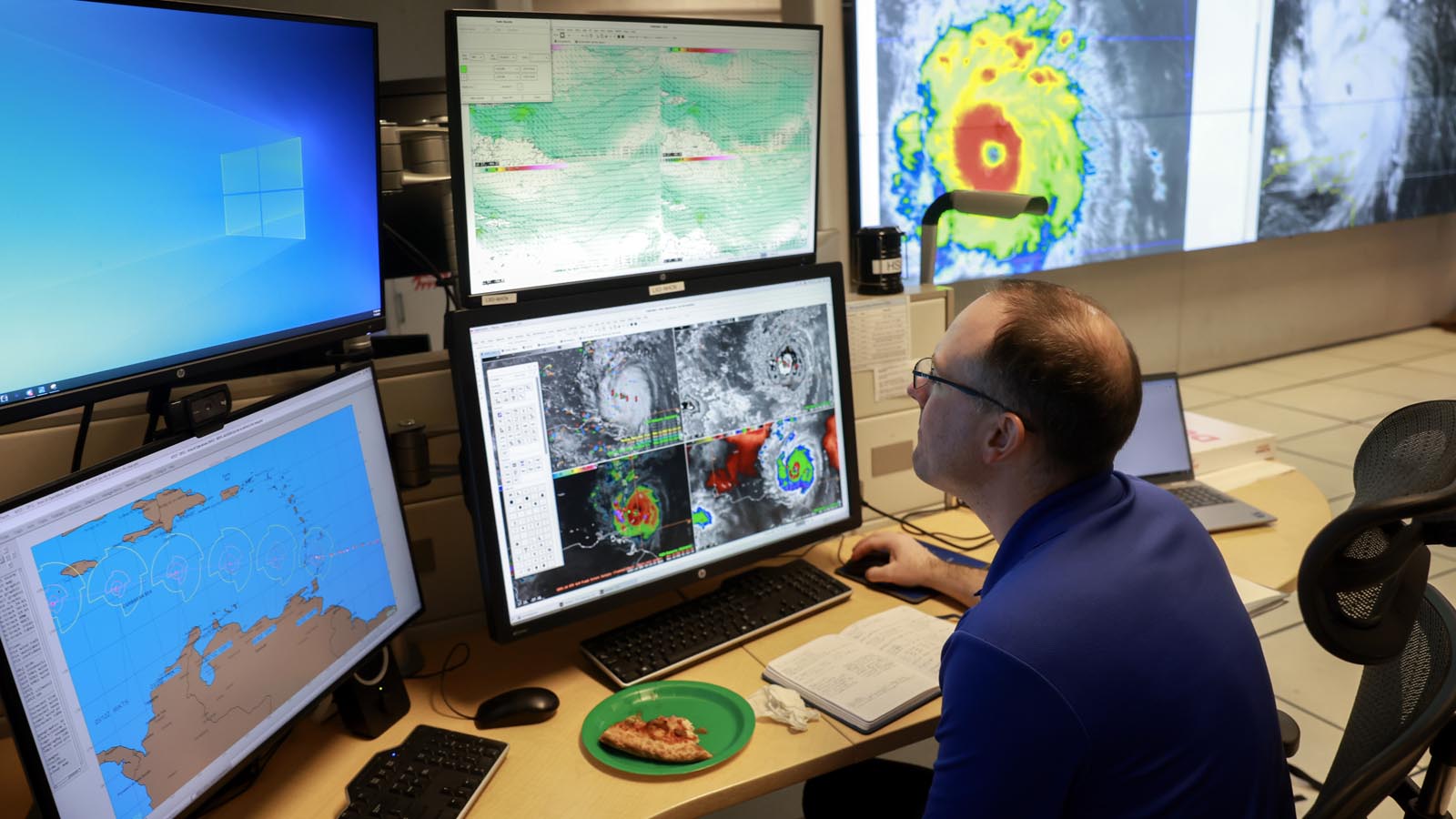Understanding Hurricane Model Accuracy: A 2025 Perspective

Welcome to your ultimate source for breaking news, trending updates, and in-depth stories from around the world. Whether it's politics, technology, entertainment, sports, or lifestyle, we bring you real-time updates that keep you informed and ahead of the curve.
Our team works tirelessly to ensure you never miss a moment. From the latest developments in global events to the most talked-about topics on social media, our news platform is designed to deliver accurate and timely information, all in one place.
Stay in the know and join thousands of readers who trust us for reliable, up-to-date content. Explore our expertly curated articles and dive deeper into the stories that matter to you. Visit Best Website now and be part of the conversation. Don't miss out on the headlines that shape our world!
Table of Contents
Understanding Hurricane Model Accuracy: A 2025 Perspective
Hurricanes. The very word evokes images of devastating winds, torrential rain, and catastrophic flooding. Predicting these powerful storms accurately is crucial for saving lives and minimizing damage, and while hurricane forecasting has made significant strides, understanding the limitations and advancements in model accuracy remains vital. This 2025 perspective explores the current state of hurricane prediction, highlighting both successes and ongoing challenges.
The Evolution of Hurricane Forecasting Models:
For decades, meteorologists have relied on complex computer models to predict hurricane tracks and intensity. These models, like the Global Forecast System (GFS) and the Hurricane Weather Research and Forecasting (HWRF) model, ingest vast amounts of data – from satellite imagery and weather balloons to surface observations – to simulate atmospheric conditions and predict a storm's future behavior. Early models focused primarily on track prediction, but recent advancements have significantly improved intensity forecasting, although challenges remain.
Improved Track Forecasting, but Intensity Remains Tricky:
While track prediction has seen remarkable improvements, consistently predicting a hurricane's intensity – its maximum sustained wind speed – remains a significant hurdle. Factors like ocean temperature, atmospheric shear, and the storm's internal dynamics significantly influence intensity, and these factors are notoriously difficult to model accurately. Small changes in these parameters can lead to large variations in predicted intensity, sometimes resulting in significant forecast errors.
What Makes Intensity Forecasting So Difficult?
Several key factors contribute to the challenges of accurately predicting hurricane intensity:
- Eye Structure: The inner core of a hurricane, the eye, plays a crucial role in intensity. Changes in eye structure, like the eyewall replacement cycle, are difficult to capture in models, leading to intensity forecast uncertainty.
- Ocean-Atmosphere Interaction: The exchange of heat and moisture between the ocean and the atmosphere is crucial for hurricane intensification. Accurately modeling this complex interaction is a major challenge.
- Data Limitations: While satellite technology has improved significantly, data sparsity, particularly over the open ocean, still limits the accuracy of models. Improved observational networks and data assimilation techniques are continuously being developed to address this issue.
- Model Resolution: Higher-resolution models can capture finer-scale details of the storm, leading to improved forecasts. However, increased resolution also demands significantly more computational power.
Advancements and Future Directions:
Despite the challenges, significant progress is being made. Researchers are actively working on:
- Improving model physics: More sophisticated representations of physical processes within hurricanes are being incorporated into models.
- Ensemble forecasting: Running multiple simulations with slightly different initial conditions helps to quantify forecast uncertainty.
- Data assimilation: Advanced techniques are being developed to better incorporate observations into model forecasts.
- Coupled ocean-atmosphere models: These models simultaneously simulate the ocean and atmosphere, providing a more holistic view of hurricane development and intensity.
The Importance of Community Engagement:
Accurate hurricane forecasting is not solely dependent on technological advancements. Effective communication and community engagement are equally crucial. The timely dissemination of warnings and the public's understanding of the limitations of forecasts are vital in reducing the impact of hurricanes. Staying informed through reliable sources like the National Hurricane Center (NHC) and your local weather service is paramount.
Conclusion:
While perfect hurricane forecasting remains elusive, advancements in model development and data assimilation are continuously improving our ability to predict these destructive storms. Understanding the limitations of current models, coupled with ongoing research and improved communication, will be crucial in minimizing the impact of future hurricanes. Staying informed and prepared remains the best defense against these powerful natural disasters. Learn more about hurricane preparedness at [link to relevant resource, e.g., FEMA website].

Thank you for visiting our website, your trusted source for the latest updates and in-depth coverage on Understanding Hurricane Model Accuracy: A 2025 Perspective. We're committed to keeping you informed with timely and accurate information to meet your curiosity and needs.
If you have any questions, suggestions, or feedback, we'd love to hear from you. Your insights are valuable to us and help us improve to serve you better. Feel free to reach out through our contact page.
Don't forget to bookmark our website and check back regularly for the latest headlines and trending topics. See you next time, and thank you for being part of our growing community!
Featured Posts
-
 Wwii Plane Crash Eleven Dead Four Airmen Finally Identified And Repatriated
May 28, 2025
Wwii Plane Crash Eleven Dead Four Airmen Finally Identified And Repatriated
May 28, 2025 -
 Georgia Department Of Public Safety Warns Of Fake Traffic Ticket Text Scam
May 28, 2025
Georgia Department Of Public Safety Warns Of Fake Traffic Ticket Text Scam
May 28, 2025 -
 Stellantis Ceo Who Is Antonio Filosa And Whats His Vision
May 28, 2025
Stellantis Ceo Who Is Antonio Filosa And Whats His Vision
May 28, 2025 -
 The Sirius Xm Holdings Investment Case Risks And Rewards For Investors
May 28, 2025
The Sirius Xm Holdings Investment Case Risks And Rewards For Investors
May 28, 2025 -
 Preventing Heart Attacks In Young Adults Protecting Your Loved Ones
May 28, 2025
Preventing Heart Attacks In Young Adults Protecting Your Loved Ones
May 28, 2025
Latest Posts
-
 Day 4 Recap Ex Juniors Dominate Evening Events
May 30, 2025
Day 4 Recap Ex Juniors Dominate Evening Events
May 30, 2025 -
 Cnns Dr Sanjay Gupta Discusses Treatment Options For Billy Joels Neurological Issue
May 30, 2025
Cnns Dr Sanjay Gupta Discusses Treatment Options For Billy Joels Neurological Issue
May 30, 2025 -
 Study Links Marijuana And Thc Edibles To Increased Heart Disease Risk
May 30, 2025
Study Links Marijuana And Thc Edibles To Increased Heart Disease Risk
May 30, 2025 -
 Holger Runes Straight Sets Victory Secures French Open Third Round Berth
May 30, 2025
Holger Runes Straight Sets Victory Secures French Open Third Round Berth
May 30, 2025 -
 Newark Airport Delays Sec Duffys Air Traffic Control Overhaul Impact
May 30, 2025
Newark Airport Delays Sec Duffys Air Traffic Control Overhaul Impact
May 30, 2025
